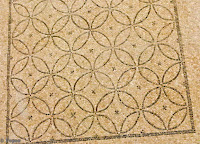We went to a ceremony organized by the Consejo Regulador de la Denominación de Origen Calificada Rioja (Regulation Council of Rioja Qualified Designation of Origin) which took place in the majestic Hotel Palace in Madrid. Around 100 wineries of DOC Rioja (Rioja Designation of Origin Qualification) were represented with its best wines. This was a wonderful occasion to taste and buy the Rioja wines.
However, as it is said, the sons must not be responsible of their parents’ mistakes, and in this case, despite the two defects of the organization, it is impossible to deny the quality of the wines we tasted.
Here you have a list of the best Rioja wines:
Contino Viña del Olivo 2007, elaborates with tempranillo and graciano grapes. Aged in oak barrels for16 months. 91pts. Parker. Around 65€
CVNE Imperial Gran Reserva 2000, elaborates with tempranillo, graciano and mazuelo grapes. Aged in French and American Oak barrels for 24 months. Around 28€.

Ángeles de Amaren 2007, tempranillo (85%) and Graciano (15%) grapes. Aged in new French and American barrels for 16 months. Around 16€
Altos R “Pigeage”, tempranillo (90%) and graciano (10%) grapes from vines that are over 80 years old. Aged in new French barrels for 15 months. Around 30€

Finca Valpiedra 2007, Tempranillo, Mazuelo, Graciano and Cabernet Sauvignon. Aged in French Oak barrels for 22 months. Around 20€.

Roda I 2006, 100% tempranillo grape. Aged in French Oak Barrels ( 50% new, 50% one vintage) for 16 months. Standing in bottle for 20 months before be on sale. Around 35€.

Real de Asua 2002, tempranillo with a bite of graciano grapes. Aged in new French oak barrels for 18 months. Around 52€.

Aluen + 2008. 100% tempranillo grapes. Aged in new French and Eastern Europe barrels for 14 months. Around 32€.

Hacienda Pradolagar 2005, Tempranillo (40%), Garnacha (10%), Mazuelo (10%) and other (40%) grapes. Aged in French and Russian barrels by Seguin Moreau for 22 months. Just 3,000 bottles. Around 85€.

La Rioja Alta 904 Gran Reserva 1998, one of the classiest Rioja wines. Tempranillo and graciano grapes. Aged in American oak barrels for 48 months. Around 30€
Tahón de Tobelos 2006, 100% tempranillo grapes from own vineyard located at the foot of Sierra de Cantabria, on the plots Hombón, La linde and La Tejera. Aged in French, American and Hungarian oak barrels. Around 22€.












































